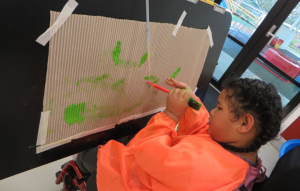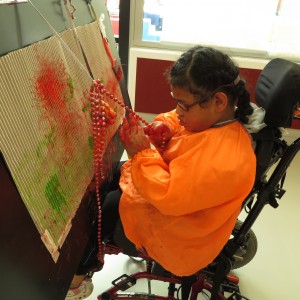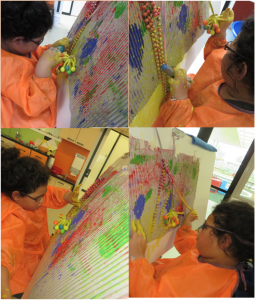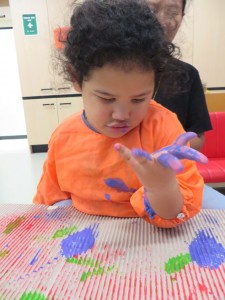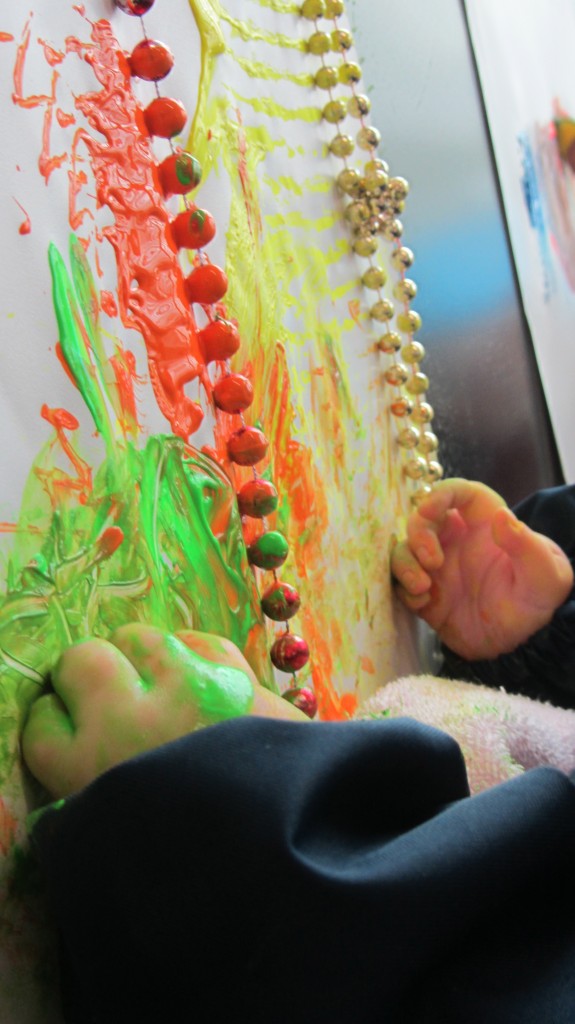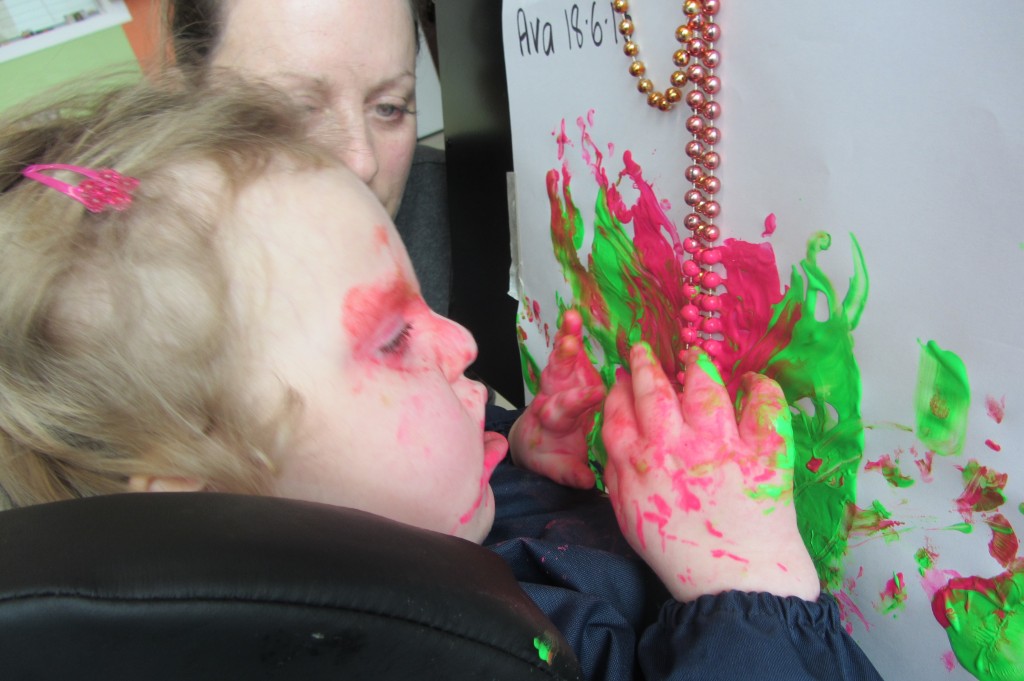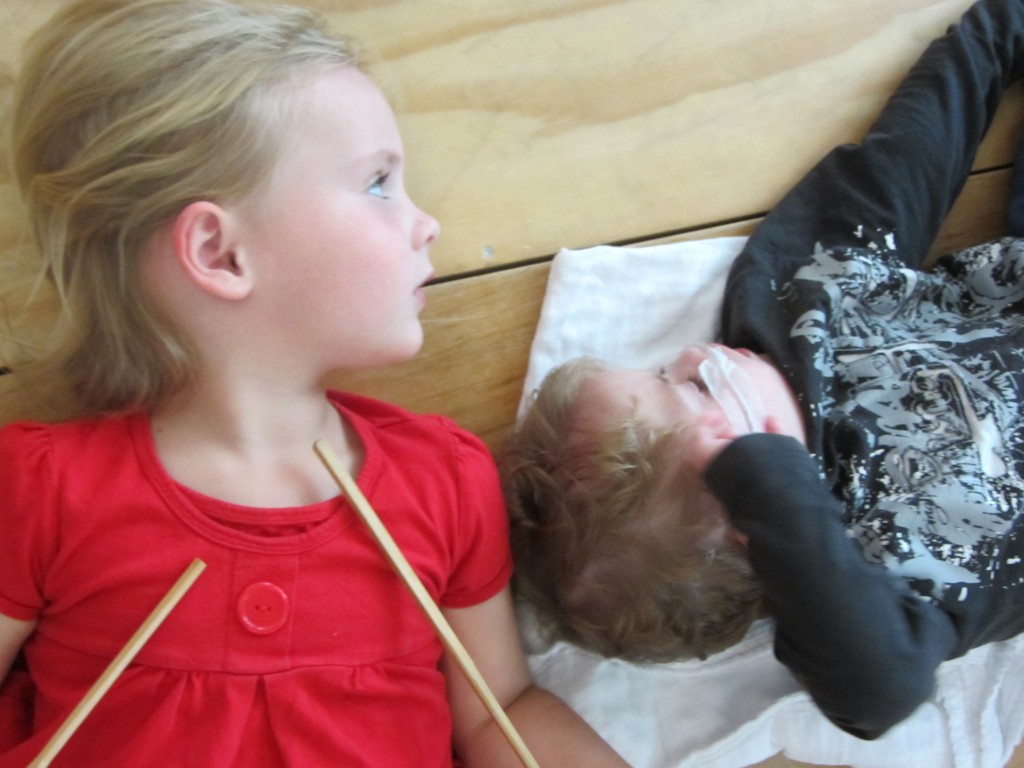Rylee loves to paint. She paints with beads, balls and paint brushes. She never hesitates to get her fingers into wet paint as well. Recently, I have noticed that she has started to explore the texture of the paper she has been using in her painting activity.
She looks for the corner of the paper she is using for her painting. Then, she feels it, crunches it and tears it apart to get a piece of paper to hold and crunch in her hand. I wondered it would be more interesting for Rylee to paint on a textured paper? I found some corrugated card board durable enough to paint and tear. We tested it out last week!
When I stuck it to the easel and presented her with her favourite painting brush, Rylee gave me a smile. She started by feeling the corrugated paper on the easel and listening to the sound that came from her fingers scratching. She then felt the brush with wet paint, took it closer to her eyes for better look and continued her painting. She worked very hard with the colour green on that day.
Today, we revisited the painting and Rylee chose to add some red paint on to it. This brightened up her painting.
We will revisit the painting again next week and add some more beautiful colours on it. Exciting work Rylee…….
Rylee’s masterpiece (23.08.2016)
Rylee revisited her painting again and again during the second term. She chose to add only one colour in each visit. Her chosen colours were red, purple and yellow. She explored many types tools when she was creating the painting. She was fully engaged in the whole painting process since we started from the green paint till we added our bright yellow on the final day.
When I handed Rylee’s finished piece of work to her mother and grandmother, Rylee’s face lit up and had a long conversation with us. Yes, Rylee, I know how hard she tried and how much fun we had in creating this master piece of yours. I am so proud of you!
Children experience an environment where: there are equitable opportunities for learning, irrespective of gender, ability, age, ethnicity, or background (Strand 3, Goal 1 of Te Whāriki, he whaariki mātauranga mo nga mokopuna o Aotearoa: Early childhood curriculum).

